Answered step by step
Verified Expert Solution
Question
1 Approved Answer
Read the case study provided and answer the following questions. IMPROVING CONSTRUCTION PRODUCTIVITY The McKinsey Global Institute (MGI's) Reinventing construction: A route to higher productivity
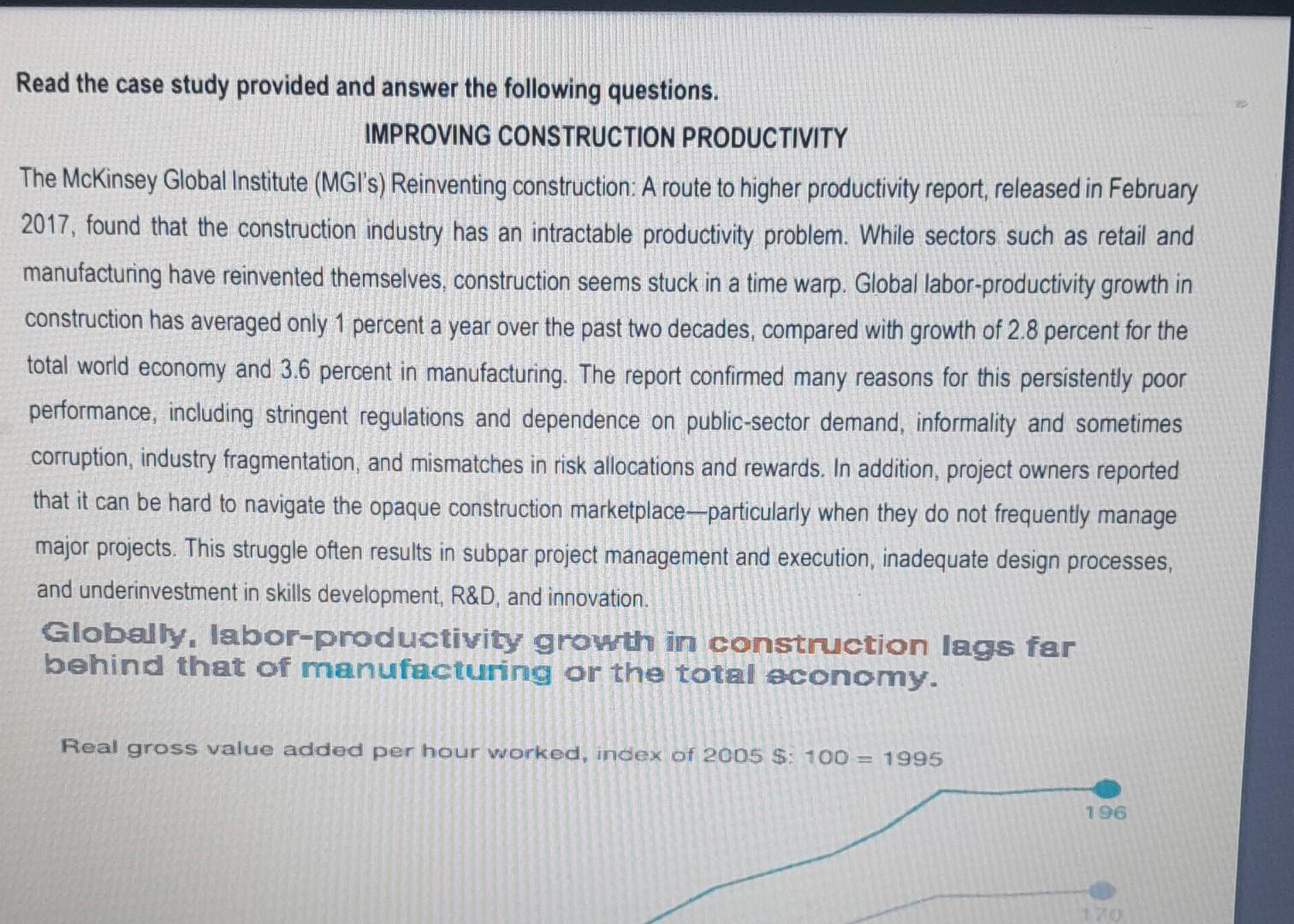
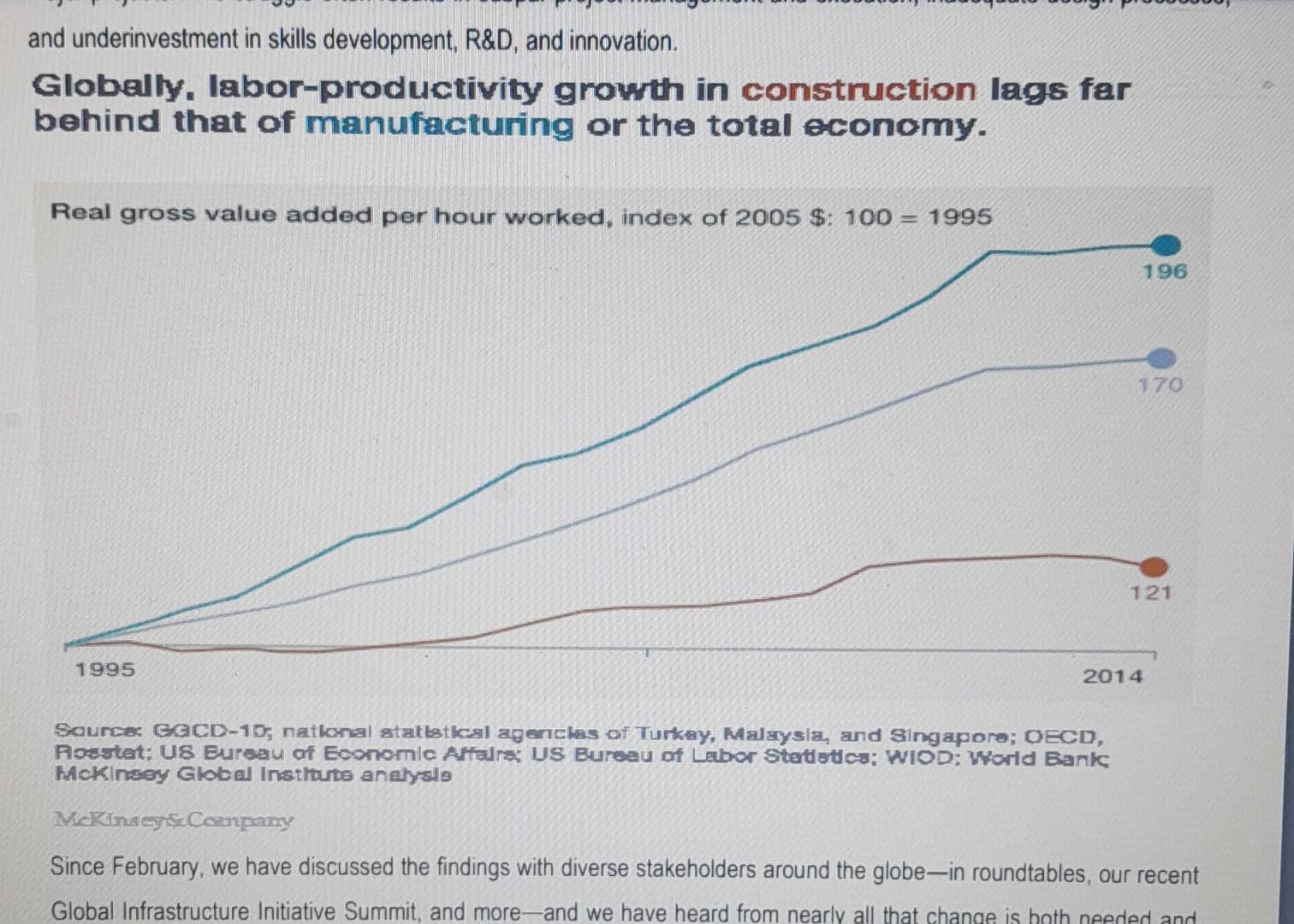
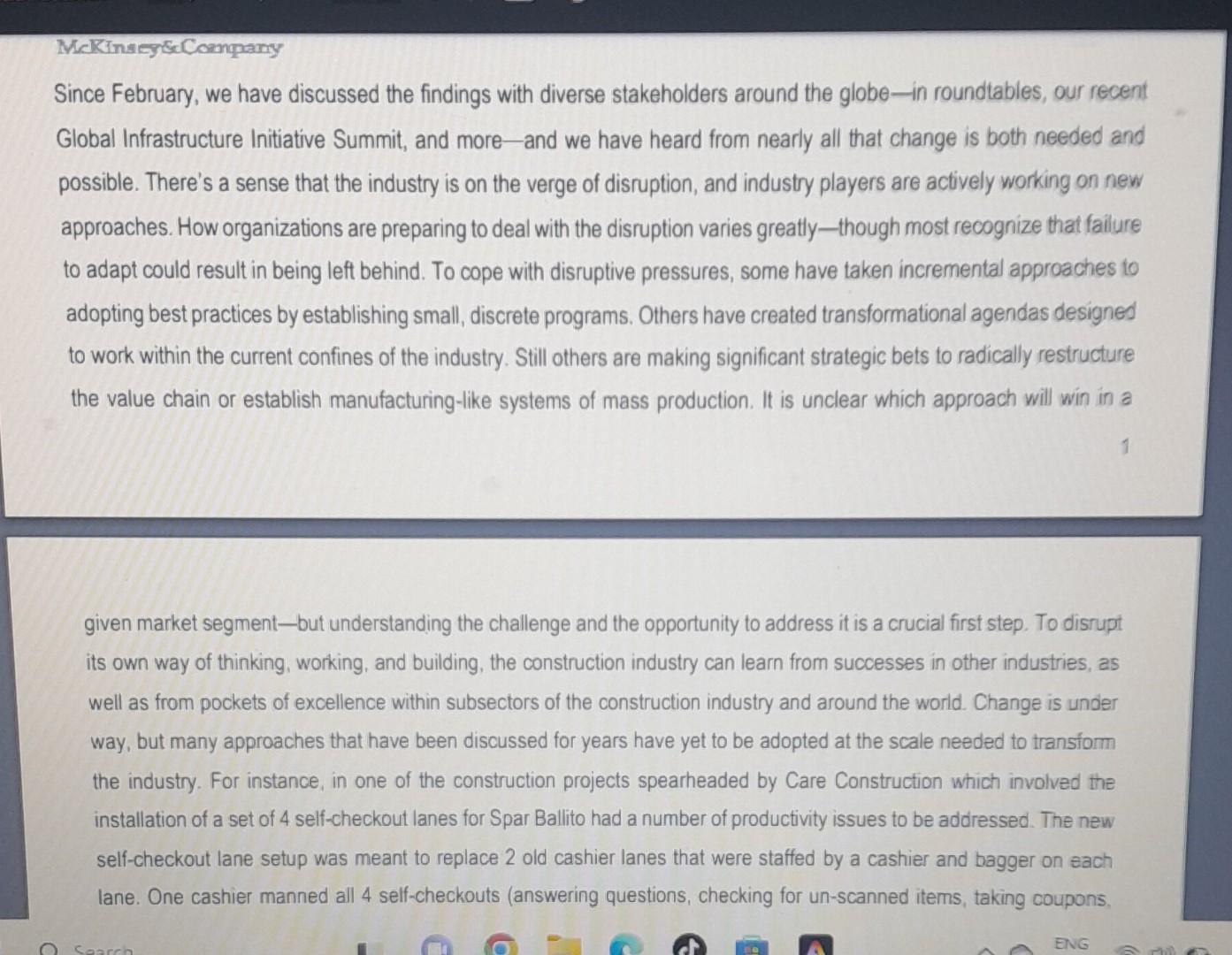
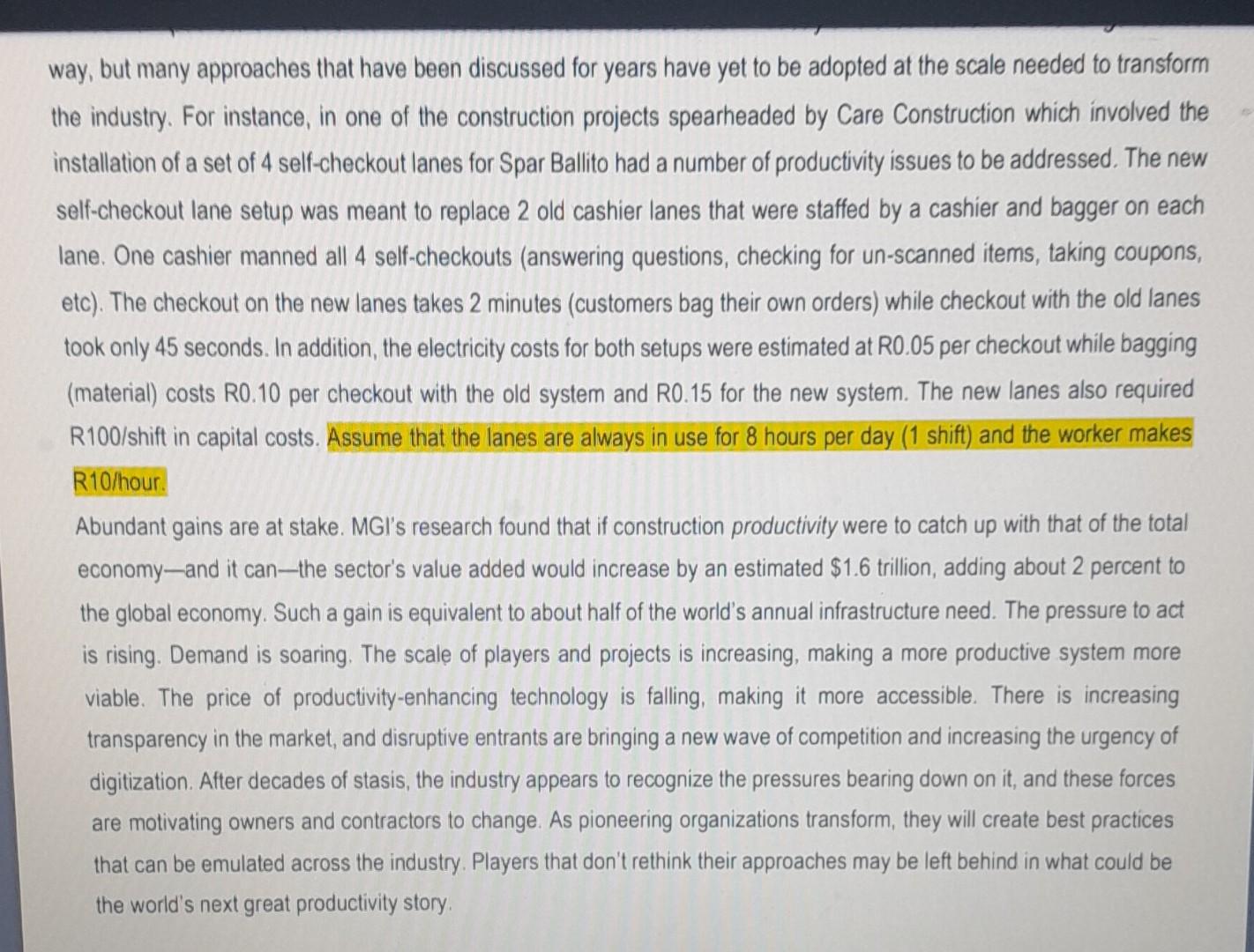
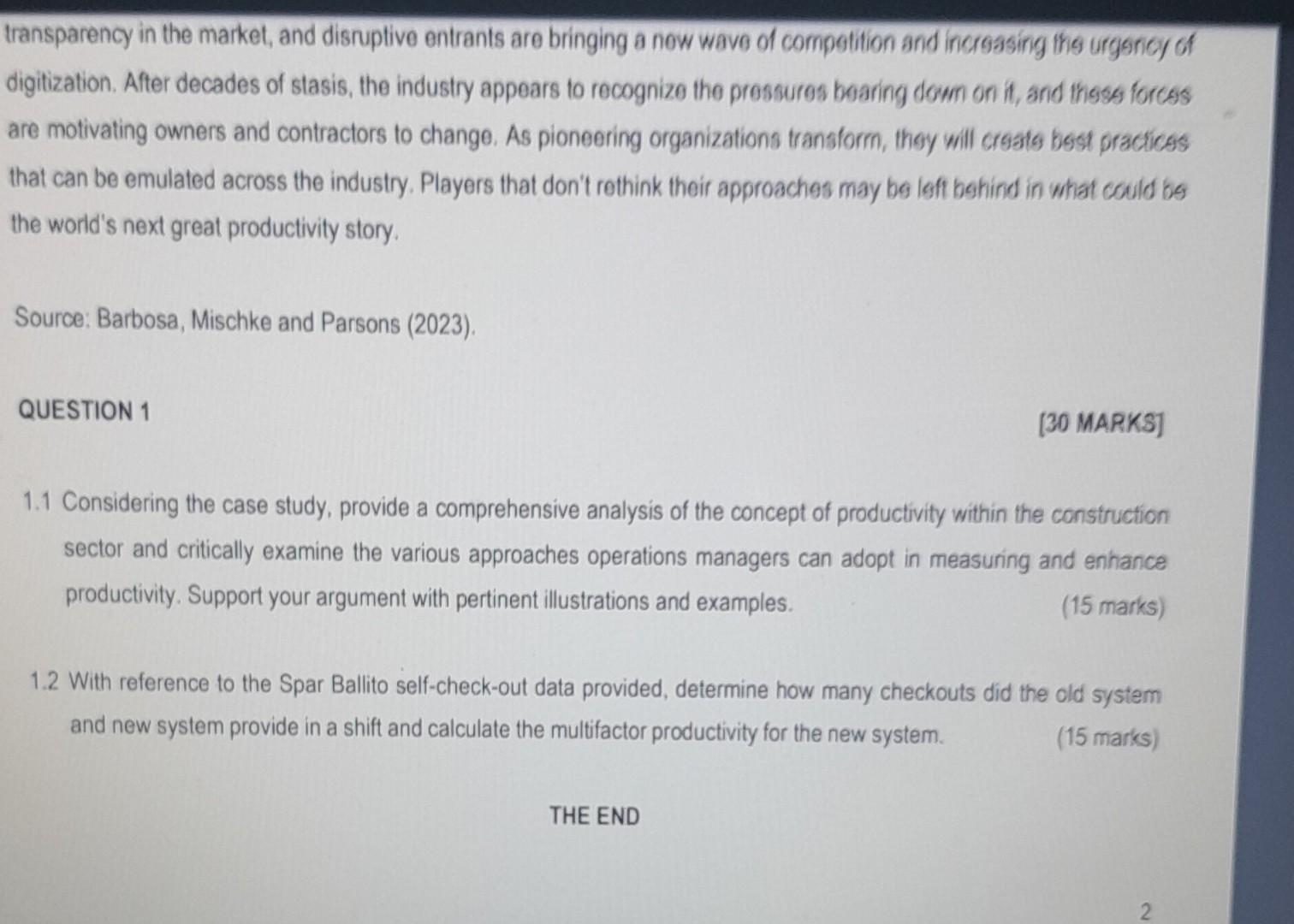
Read the case study provided and answer the following questions. IMPROVING CONSTRUCTION PRODUCTIVITY The McKinsey Global Institute (MGI's) Reinventing construction: A route to higher productivity report, released in February 2017, found that the construction industry has an intractable productivity problem. While sectors such as retail and manufacturing have reinvented themselves, construction seems stuck in a time warp. Global labor-productivity growth in construction has averaged only 1 percent a year over the past two decades, compared with growth of 2.8 percent for the total world economy and 3.6 percent in manufacturing. The report confirmed many reasons for this persistently poor performance, including stringent regulations and dependence on public-sector demand, informality and sometimes corruption, industry fragmentation, and mismatches in risk allocations and rewards. In addition, project owners reported that it can be hard to navigate the opaque construction marketplace-particularly when they do not frequently manage major projects. This struggle often results in subpar project management and execution, inadequate design processes, and underinvestment in skills development, R\&D, and innovation. Globally, labor-productivity growth in construction lags far behind that of manufacturing or the total economy. Real gross value added per hour worked, index of 2005$:100=1995 and underinvestment in skills development, R\&D, and innovation. Globally. labor-productivity growth in construction lags far behind that of manufacturing or the total economy. Sounces GGCD-10; natkonal atatbstkel agencles of Turkay, Malaysla, and Singapore; OECD, McKIneey Global Institurto analysla MeKinareytcompany Since February, we have discussed the findings with diverse stakeholders around the globe-in roundtables, our recent Global Infrastructure Initiative Summit, and more - and we have heard from nearlv all that change is hoth needed and Since February, we have discussed the findings with diverse stakeholders around the globe-in roundtables, our recent Global Infrastructure Initiative Summit, and more - and we have heard from nearly all that change is both needed and possible. There's a sense that the industry is on the verge of disruption, and industry players are actively working on new approaches. How organizations are preparing to deal with the disruption varies greatly -though most recognize that failure to adapt could result in being left behind. To cope with disruptive pressures, some have taken incremental approaches to adopting best practices by establishing small, discrete programs. Others have created transformational agendas designed to work within the current confines of the industry. Still others are making significant strategic bets to radically restructure the value chain or establish manufacturing-like systems of mass production. It is unclear which approach will win in a given market segment-but understanding the challenge and the opportunity to address it is a crucial first step. To disrupt its own way of thinking, working, and building, the construction industry can learn from successes in other industries, as well as from pockets of excellence within subsectors of the construction industry and around the world. Change is under way, but many approaches that have been discussed for years have yet to be adopted at the scale needed to transform the industry. For instance, in one of the construction projects spearheaded by Care Construction which involved the installation of a set of 4 self-checkout lanes for Spar Ballito had a number of productivity issues to be addressed. The new self-checkout lane setup was meant to replace 2 old cashier lanes that were staffed by a cashier and bagger on each lane. One cashier manned all 4 self-checkouts (answering questions, checking for un-scanned items, taking coupons, way, but many approaches that have been discussed for years have yet to be adopted at the scale needed to transform the industry. For instance, in one of the construction projects spearheaded by Care Construction which involved the installation of a set of 4 self-checkout lanes for Spar Ballito had a number of productivity issues to be addressed. The new self-checkout lane setup was meant to replace 2 old cashier lanes that were staffed by a cashier and bagger on each lane. One cashier manned all 4 self-checkouts (answering questions, checking for un-scanned items, taking coupons, etc). The checkout on the new lanes takes 2 minutes (customers bag their own orders) while checkout with the old lanes took only 45 seconds. In addition, the electricity costs for both setups were estimated at R0.05 per checkout while bagging (material) costs R0.10 per checkout with the old system and R0.15 for the new system. The new lanes also required R100/ shift in capital costs. Assume that the lanes are always in use for 8 hours per day (1 shift) and the worker makes R10/hour. Abundant gains are at stake. MGI's research found that if construction productivity were to catch up with that of the total economy -and it can - the sector's value added would increase by an estimated $1.6 trillion, adding about 2 percent to the global economy. Such a gain is equivalent to about half of the world's annual infrastructure need. The pressure to act is rising. Demand is soaring. The scale of players and projects is increasing, making a more productive system more viable. The price of productivity-enhancing technology is falling, making it more accessible. There is increasing transparency in the market, and disruptive entrants are bringing a new wave of competition and increasing the urgency of digitization. After decades of stasis, the industry appears to recognize the pressures bearing down on it, and these forces are motivating owners and contractors to change. As pioneering organizations transform, they will create best practices that can be emulated across the industry. Players that don't rethink their approaches may be left behind in what could be the world's next great productivity story. transparency in the market, and disuptive entrants are bringing a now wave of competition and increasing the urgancy of digitization. After decades of stasis, the industry appears to recognize the pressures bearing down on it, and these forces are motivating owners and contractors to change. As pioneering organizations transtorm, they will create best practices that can be emulated across the industry. Players that don't rethink their approaches may be left behind in what could be the world's next great productivity story. Source: Barbosa, Mischke and Parsons (2023). QUESTION 1 [30 MARKS] 1.1 Considering the case study, provide a comprehensive analysis of the concept of productivity within the construction sector and critically examine the various approaches operations managers can adopt in measuring and enhance productivity. Support your argument with pertinent illustrations and examples. (15 marks) 1.2 With reference to the Spar Ballito self-check-out data provided, determine how many checkouts did the old system and new system provide in a shift and calculate the multifactor productivity for the new system. (15 marks)
Step by Step Solution
There are 3 Steps involved in it
Step: 1

Get Instant Access to Expert-Tailored Solutions
See step-by-step solutions with expert insights and AI powered tools for academic success
Step: 2

Step: 3

Ace Your Homework with AI
Get the answers you need in no time with our AI-driven, step-by-step assistance
Get Started


